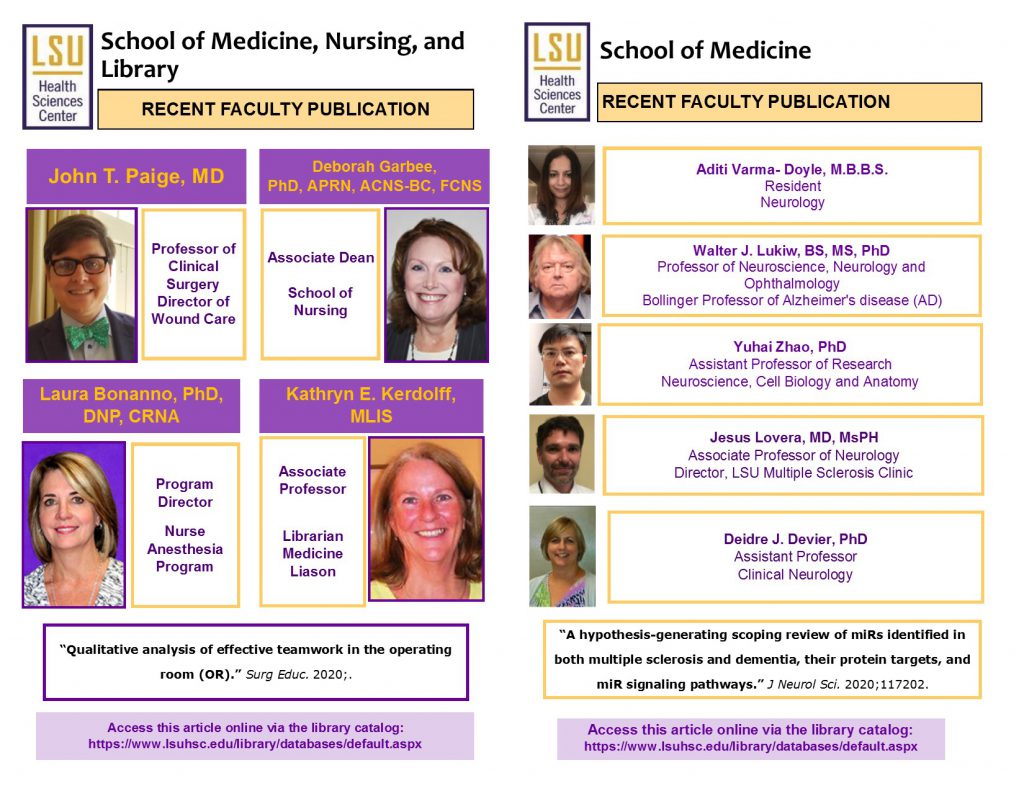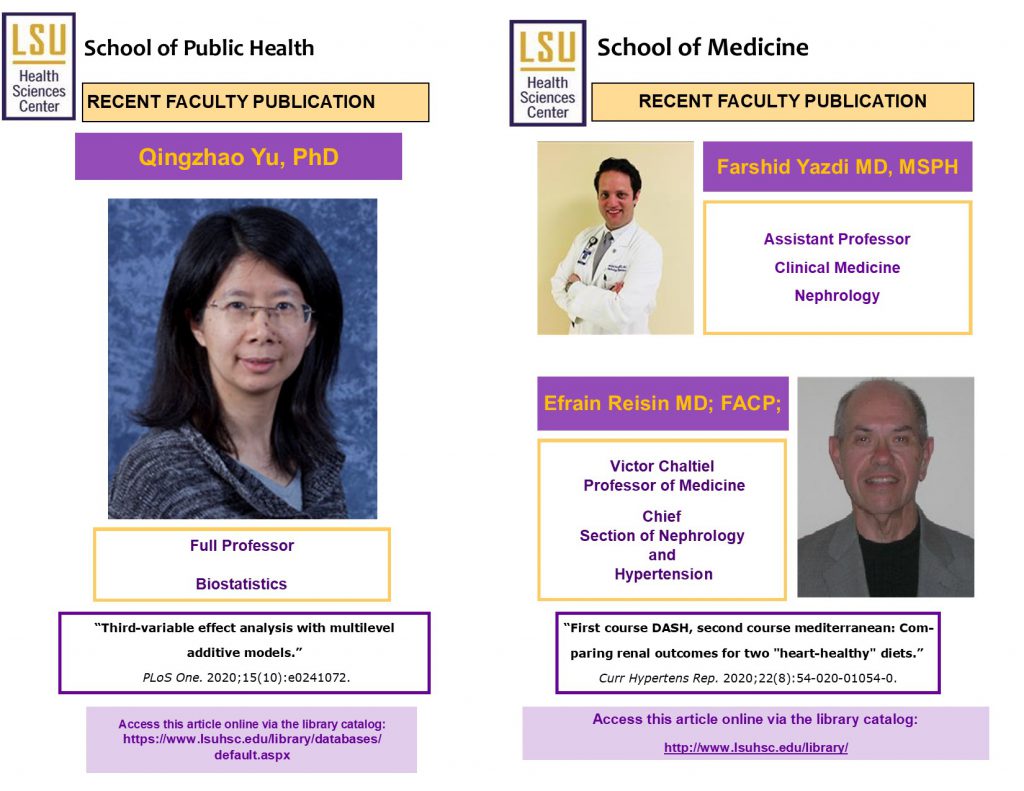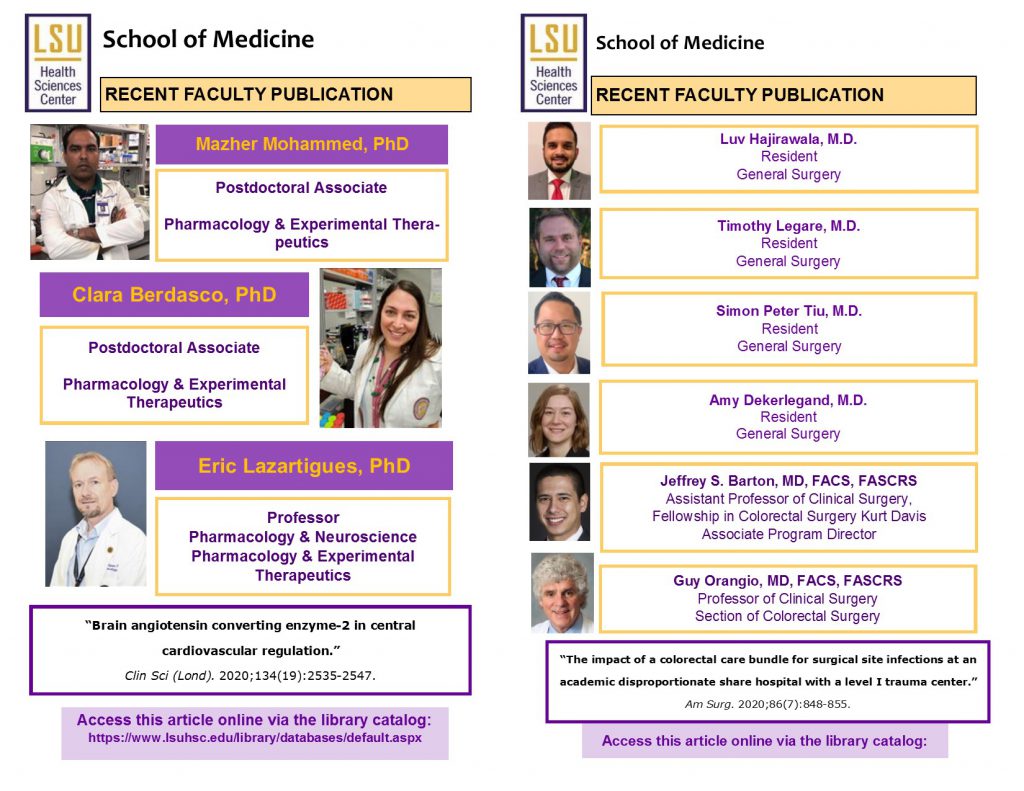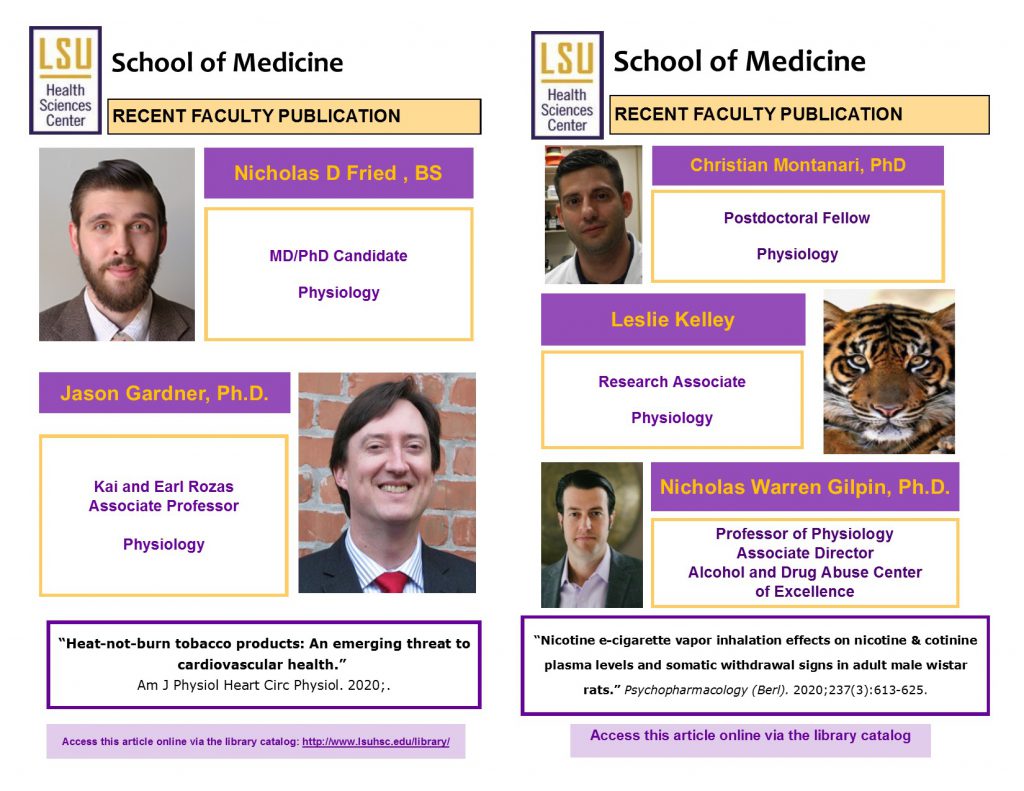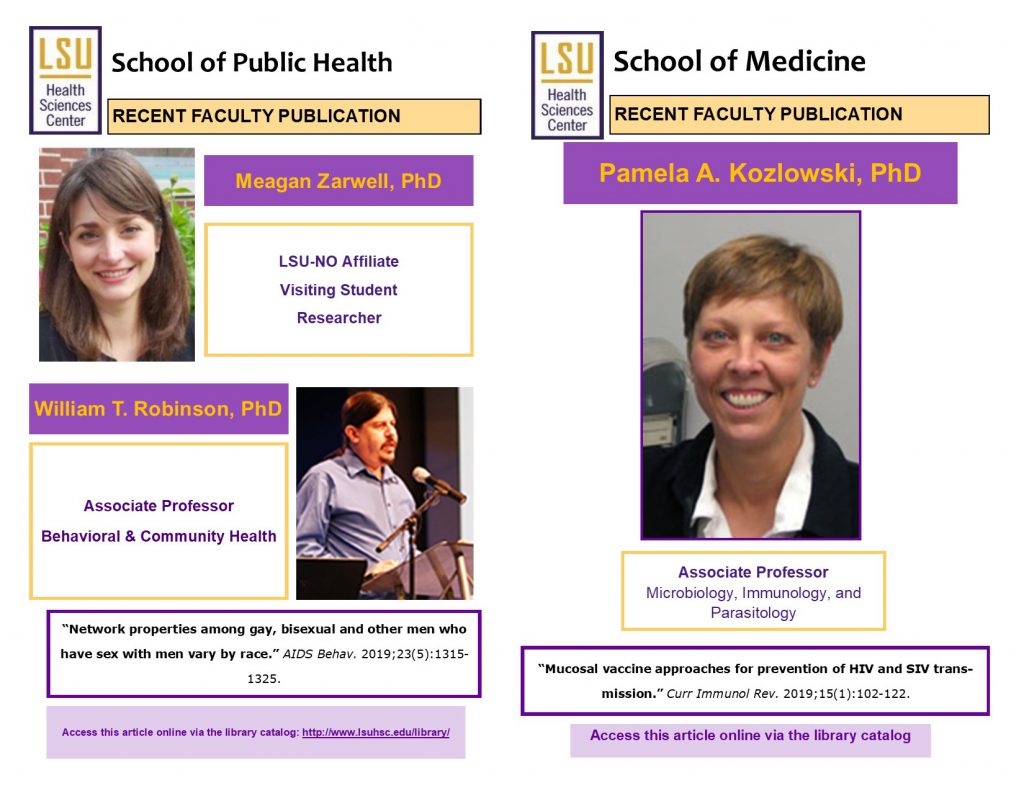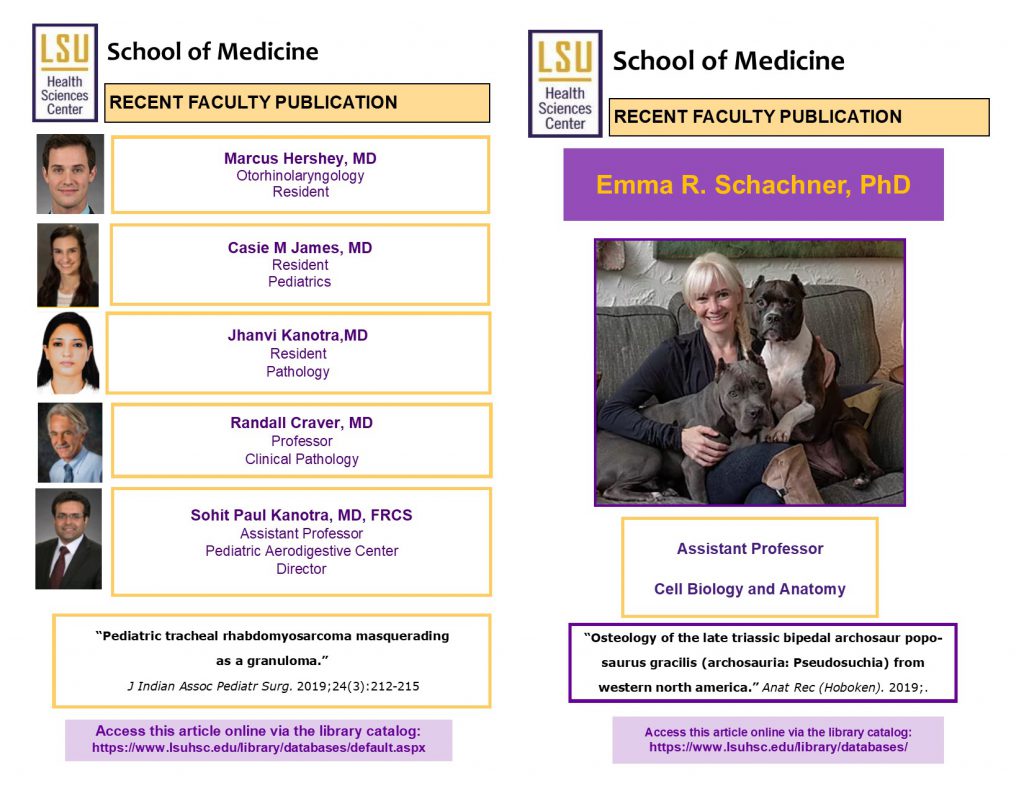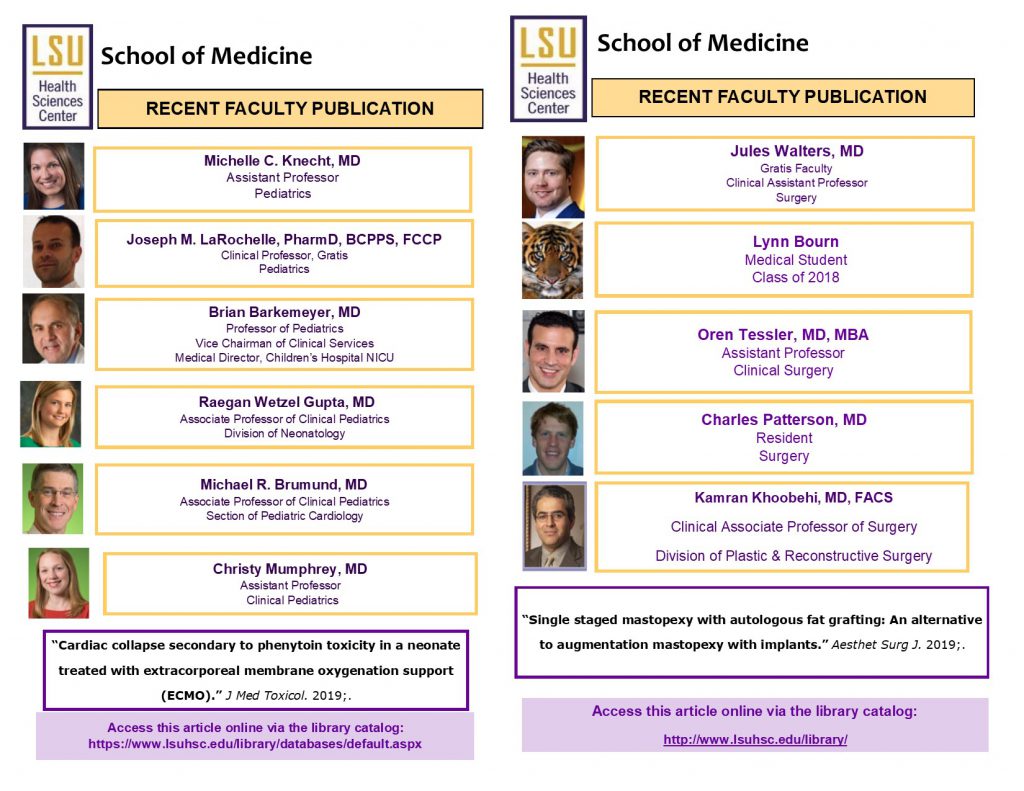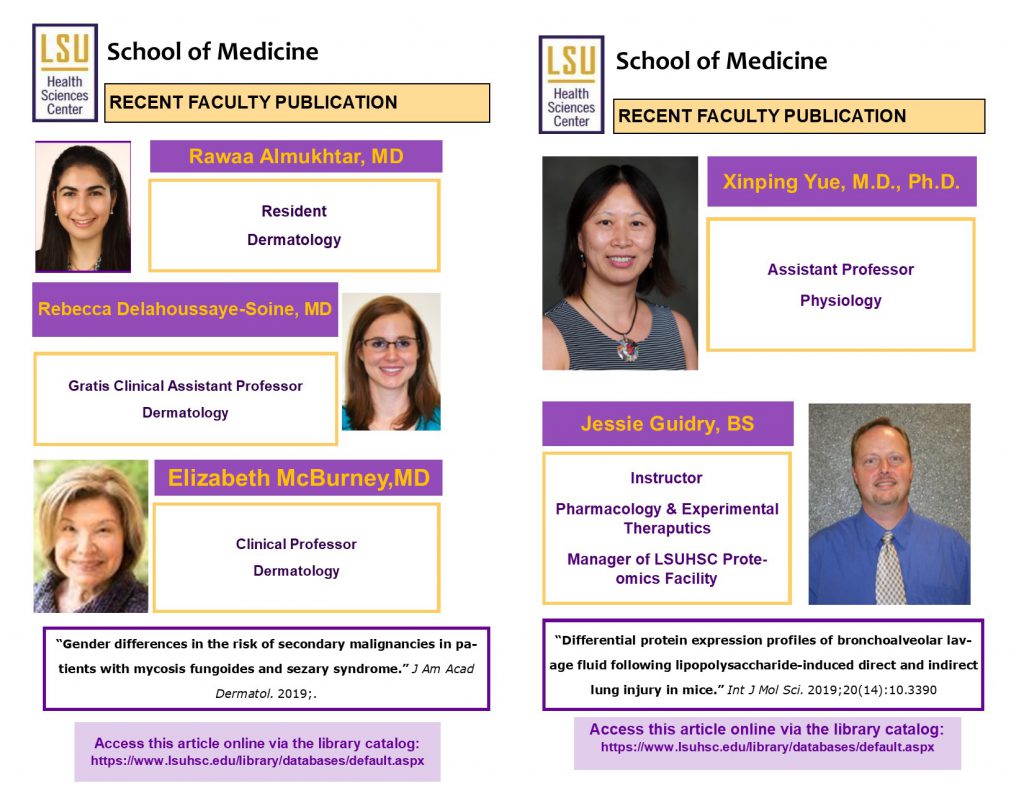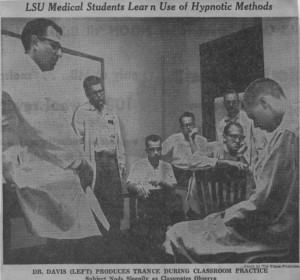A new selection of articles have been added to the Faculty Publications display in the Ische Library. These eight articles, as well as all of the articles in our Faculty Publications database, are authored by at least one member of our research community here at LSUHSC-New Orleans. Each month the Library is proud to present copies of eight of these publications in a rotating display of 16.
1. Abualkhair WH, Zhou M, Ahnen D, Yu Q, Wu XC, Karlitz JJ.
Trends in incidence of early-onset colorectal cancer in the united states among
those approaching screening age. JAMA Netw Open. 2020;3(1):e1920407.
2. Gunaldo TP, Augustus-Wallace
A, Denise Schilling D, Marquita Hicks M, Goumas A, Levitzky E.
Gaining an understanding of interprofessional roles and responsibilities among
pre-professional health students. (HIP&E) Hlth Interprofessional
Pract Ed. 2020;4(1):eP119-1-8.
3. Keane C, Fearnhead NS,
Bordeianou L, Christensen P, Espin Basany E, Laurberg S, Mellgren A, Messick C,
Orangio GR, Verjee A, Wing K,
Bissett I, LARS International Collaborative Group. International consensus
definition of low anterior resection syndrome. Colorectal Dis. 2020;.
4. Mouton AJ, El Hajj EC, Ninh VK, Siggins RW, Gardner JD.
Inflammatory cardiac fibroblast phenotype underlies chronic alcohol-induced
cardiac atrophy and dysfunction. Life Sci. 2020;245117330.
5. Plessl D, Salomon B, Haydel A, Leonardi C, Bronstone A, Dasa V.
Rapid versus standard recovery protocol is associated with improved recovery of
range of motion 12 weeks after total knee arthroplasty. J Am Acad
Orthop Surg. 2020;.
6. Stewart T, Zea A, Aviles D. Expression of the IL-2R in human
podocytes and the effect of activation on autophagy and apoptosis. Fetal
Pediatr Pathol. 2020;1-9.
7. Sugarman OK, Bachhuber MA,
Wennerstrom A, Bruno T, Springgate
BF. Interventions for incarcerated adults with opioid use disorder in the
united states: A systematic review with a focus on social determinants of
health. PLoS One. 2020;15(1):e0227968.
8. Patterson CW, Stark M, Sharma S, Mundinger GS. Regeneration and expansion of autologous full-thickness skin through a self-propagating autologous skin graft technology. Clin Case Rep. 2019;7(12):2449-2455.
Publications cited in the Faculty Publications database are harvested weekly from a variety of sources, such as PubMed, SCOPUS, and CINAHL, to name a few. In addition to articles they include books, book chapters, papers, editorials, letters to the editor, and meeting abstracts, all authored by at least one member of the LSUHSC-NO community. The database is maintained by Reference Librarian Kathy Kerdolff and is available to the general public here or via the Library’s webpage. For a PDF of a bibliography of this month’s additions,click here. If you have an article you would like us to highlight or if you have any questions regarding the display or the database, you can contact Kathy Kerdolff.

 myLSUHSC
myLSUHSC